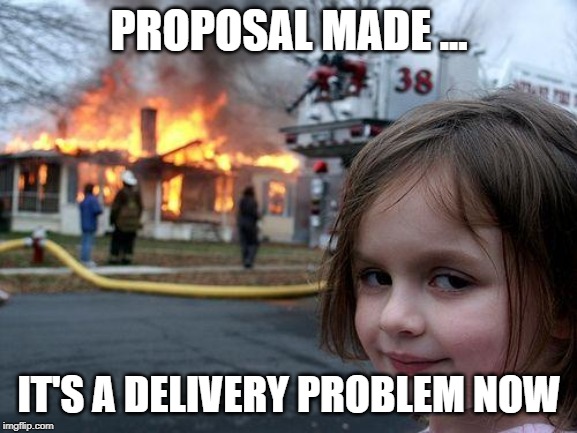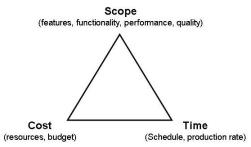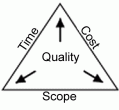It’s a hard decision for a company to turn to sub-contracting. Having realized that they don’t have in-house expertise and don’t want to/can’t staff the new development properly, they turn to another company that they have probably never worked with. The lack of trust is tangible from Day 0. They have the business plan secured, write the tender, requesting for company information (RFI), asking for delivery proposals (RFP), reviewing them, making a decision carefully.
Let’s now examine the other side!
A common approach
The very first thing you can do is gathering enough information to give an insightful proposal. You’ve got to learn a lot of things and must thus study your future client:
- Read about their background,
- Check latest news about them,
- Learn about their leaders,
- See who are the people you’d be potentially working with,
- Which technologies are used,
- Etc
One may ask how the last one can be done: you’d be surprised how much information can be retrieved simply by e.g. visiting a web site. When I did this the last time, for example, I could find traces about used front-end and back-end technologies, CRM system (including marketing), analytics, integration with social networks, user management, security methods, etc. This will help a lot to find the constraints you must be operating within in your proposal and on the project later on.
There’s usually a chance to ask questions and get answers from the client, either in written or on a conf call. Sometimes these calls are exclusive with the client, other times you’re together with other tendering companies listening to each others’ questions and the answers provided. You must focus on the top 5-10 most important questions to ask that are really crucial for your proposal – otherwise you’re wasting a precious opportunity and may also look less professional.
Get aligned internally in the organisation before finalizing the proposal. Don’t win for your bonus/promotion only and then vanish when the project starts saying …

I saw projects where the sales did like this, leaving the account manager and the rest of the team in a massive trouble. Ultimately, these folks should also be accountable for the success of the project to some extent, no? Perhaps, even financially.
Make sure the knowledge transfer from pre-sales to delivery is as efficient as possible. Lot of organisations have an A-team specialized in making proposals and the actual delivery is done by another team. I’ve already seen clients so much impressed by the “A-team” and deeply disappointed by what was following afterwards. Having different teams specialized in different areas is not the problem per se, provided they’re both competent and aligned – latter should follow from the former, actually.
The proposal will probably describe:
- Identified needs, stakeholders in question,
- The solution and how it satisfies the needs,
- Team structure,
- Schedule with dependencies,
- Cost breakdown,
- Etc.
It’s easy to forget about the following two topics, however: risks and assumptions. They both reveal more context beyond the afore-mentioned major areas, make the overall picture more complete. Also, they may become important arguments in your hands, when things are turning to serious. Don’t think, though, that merely calling out risks and assumptions will solve problems automagically – ignoring or forgetting about them will just hurt back on both sides.
Sometimes (often?) tendering companies don’t possess deep domain knowledge – they may just have technical people (e.g. developers) or developed a general-purpose product that now needs to be customized to a specific need. In any case, we should all calculate with a learning curve at the beginning of the project, when making/evaluating proposals.
Did I miss anything? I’m sure I did. Above list is just a collection of best practices that one may not find easily anywhere around. Please share your hints, they’re more than welcome!
This article is part of the series of related posts about delivery best practices. You may find other useful hints at https://gabortorok.wordpress.com/2019/10/08/delivery-best-practices-proven-methods-for-it-project-delivery/.
Best,
Gabor

